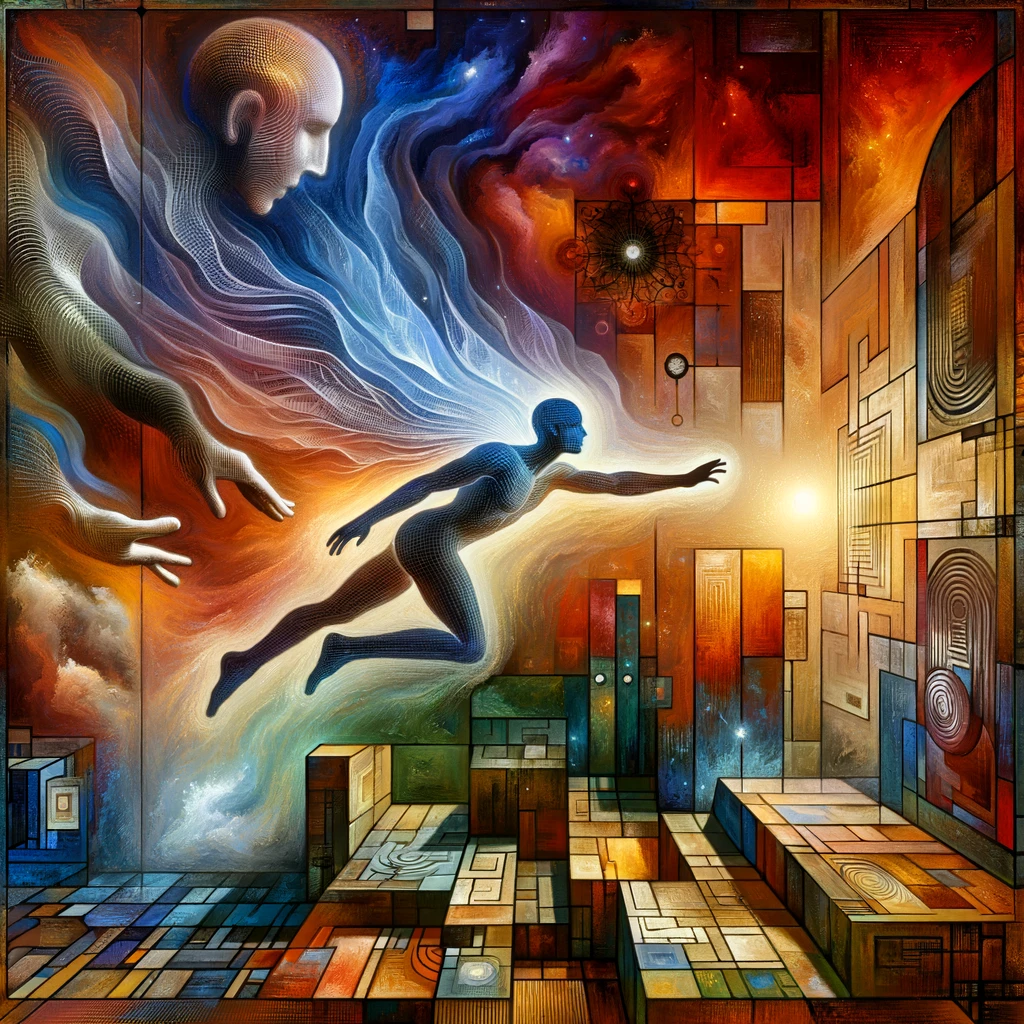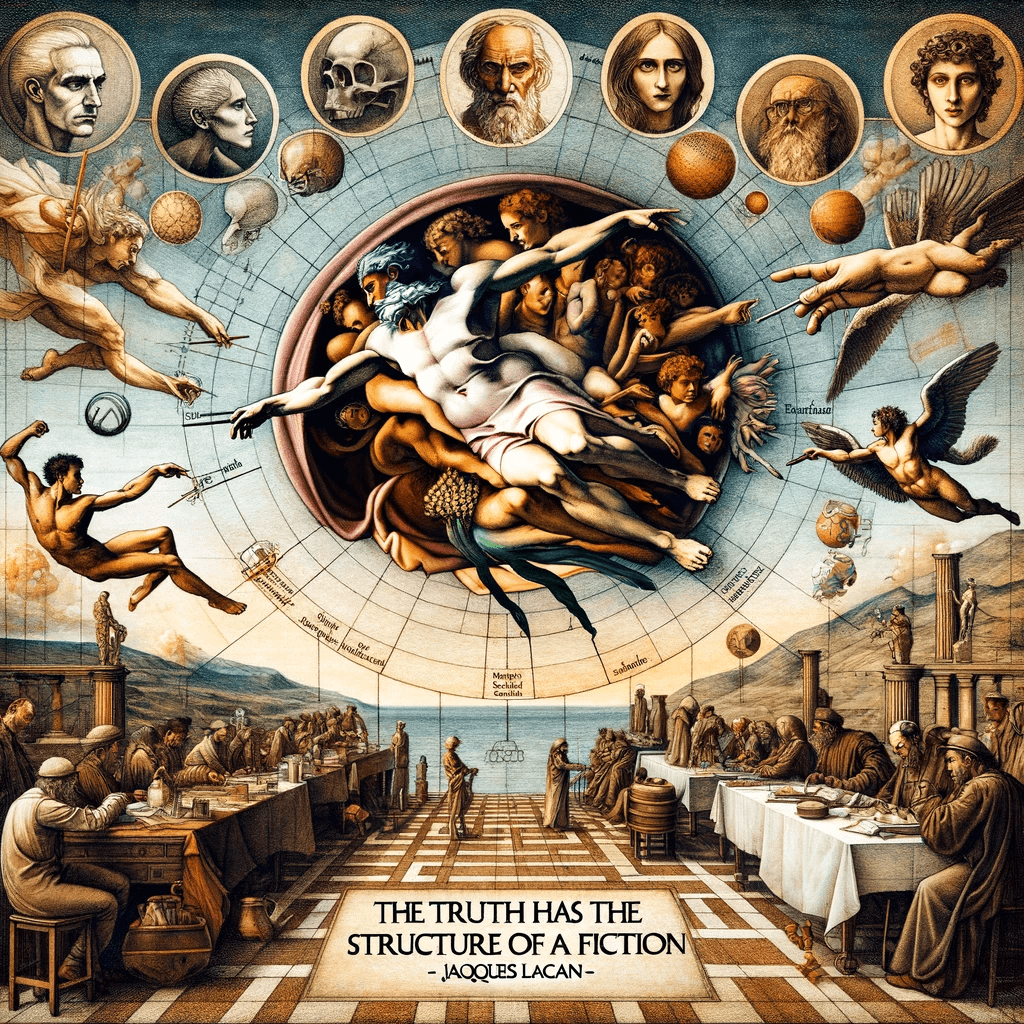
Jacques Cousteau: Dive with Noble Purpose
“The sea, once it casts its spell, holds one in its net of wonder forever.” Jacques Cousteau In an era when technology was beginning to shrink it, Jacques Cousteau expanded the world. […]


–George Santayana
15th August 1947 is the chosen glory of attaining independence and also the chosen trauma of losing more than 2,000,000 lives.
Marked by unprecedented mass migration (18,000,000 lives displaced) and harrowing communal violence, it did not merely redraw geographical boundaries; it reconfigured the very fabric of identity, culture, and collective memory.
By applying Lacan’s concepts of the Real, the Imaginary, and the Symbolic, along with his notions of desire and lack, we aim to uncover the underlying psychological currents that influenced and were, in turn, reshaped by this monumental event. Lacanian theory, with its emphasis on language, identity, and the unconscious, provides a unique toolkit to dissect the narratives, myths, and symbols that emerged from and influenced the course of the partition.
We will derive insights into the formation of national identities, the genesis of communal conflicts, and the enduring legacy of such historical moments. Through the Lacanian lens, we will experience the partition of India as a living, breathing entity in the collective unconscious.

Colonial Rule and the Seeds of Division
The arrival of the British East India Company in India in the 1600s marked the beginning of colonial rule, which would last until 1947. The British strategy of ‘divide and rule’ played a significant role in creating and exacerbating divisions among India’s diverse religious and ethnic groups. The colonial administration implemented policies that often favoured one group over another, leading to deep-seated mistrust and communal tensions.
The Emergence of Nationalist Movements
This period saw the rise of nationalist movements, which, while initially united against colonial rule, gradually began to fracture along religious lines.
The Indian National Congress, established in 1885, initially sought greater participation for Indians in governance but eventually became the primary force advocating for complete independence from British rule.
The All-India Muslim League, formed in 1906, initially focused on protecting the rights of Muslims in a Hindu-majority India but later advocated for the creation of a separate Muslim nation, leading to the demand for Pakistan.
After the war, Britain weakened, became economically drained, and could not maintain its colonial holdings, including India. The Labour government in Britain, led by Prime Minister Clement Attlee, was more sympathetic to Indian aspirations for independence. Lord Louis Mountbatten was appointed as the last Viceroy of India with the mandate to oversee the transition to independence.
The negotiations for independence were fraught with disagreements between the Congress and the Muslim League. The inability to reach a consensus on a united India led to the decision to partition the subcontinent along religious lines.

-Jacques Lacan
Jacques Lacan, a French psychoanalyst and psychiatrist, revolutionised the field of psychoanalysis with his reinterpretation of Freud’s work, introducing new theoretical constructs that offer a unique lens to view human behaviour and social phenomena.
In this historical backdrop, Lacanian concepts such as the Real (the trauma and violence of partition), the Imaginary (idealised visions of independent nations), and the Symbolic (new laws, borders, and identities) find significant application. The desires and lacks of the various groups and leaders can be explored through a Lacanian lens to understand what led to the decisions for partition.
Lacan proposed that human experience is structured around three registers: the Imaginary, the Symbolic, and the Real.
The Imaginary: This order is associated with images and illusions and is rooted in the early developmental stage of a child. It involves the formation of the ego and is marked by a pre-linguistic sense of completeness and duality with the other.

The Imaginary can help us understand the idealised visions of nationhood.
The Symbolic: Representing the realm of language, law, and societal structures, the Symbolic order is where the individual is shaped by the norms and rules of society. It is crucial for the development of the psyche and encompasses most of adult life.

The Symbolic can shed light on the new laws and social structures that emerged.
The Real: The most elusive of the three, the Real represents what is outside language and resists symbolisation. It is often associated with the traumatic or impossible aspects of reality that cannot be fully articulated or integrated into the Symbolic order.

The Real can provide insights into the unassimilable experiences of trauma and violence.

Desire and Lack: Central to Lacan’s theory is the concept of desire, which he posits as a fundamental driving force in human life. Desire, according to Lacan, is not a desire for a specific object but a desire for desire itself, a perpetual longing driven by a sense of lack. This lack is intrinsic to the human condition and is a result of our entry into the Symbolic order.
By exploring the desires and perceived lacks of the individuals and groups involved, we can gain a deeper understanding of the psychological undercurrents that drove the events of the partition.

The Mirror Stage: This concept refers to a developmental stage in which a child first recognises their reflection in a mirror. This recognition leads to the formation of the ‘I’ or ego. However, it is based on a misrecognition, as the unity and coherence perceived in the mirror are in contrast to the child’s actual experience of fragmentation and dependency. This stage is crucial for understanding the development of identity and the ego.
Language and the Unconscious: Lacan famously stated, “The unconscious is structured like a language.” He believed that the unconscious is not a primitive part of the mind but is intricately linked to and expressed through language.

Building on the historical context, we now apply Lacanian psychoanalysis to dissect the partition of India, exploring the interplay of the Real, the Imaginary, and the Symbolic, along with the concepts of desire and lack.



To further illustrate the Lacanian analysis of the partition of India, we will consider specific case studies and examples. These instances will demonstrate how Lacan’s concepts of the Real, the Imaginary, and the Symbolic, as well as desire and lack, manifested in the thoughts, actions, and experiences of individuals and groups during this period.



–Jacques Lacan
Both Nehru and Jinnah desired to be the first prime minister of Independent India.
The lack of feeling like a ‘good enough’ son or leader, especially in the shadows of his father and Gandhi, might have driven Nehru’s ambition.
His desire to become the first Prime Minister, even at the cost of partition, can be seen as an attempt to establish his own legacy and identity, distinct from the towering presence of his father, Motilal Nehru, the wealthiest and most famous lawyer and politician and his mentor Mahatma Gandhi, the father of the Nation.
Jinnah was diagnosed with a terminal illness and had only a year to live. The awareness of a terminal illness intensified Jinnah’s desire to leave a lasting impact. The realisation of having limited time created a profound sense of lack, a gap between what one wants to achieve and the time available to achieve it.
He felt a pressing need to see the creation of Pakistan within his lifetime, driving him to make decisions more rapidly and aggressively. The establishment of Pakistan allowed Jinnah to achieve a form of immortality through nation-building. His name and legacy became inextricably linked to the identity and history of the new nation.
The British Empire’s age-old desire to divide and rule stems from the lack of resources to control colonies after the Second World War. This approach involved creating or exacerbating divisions within local populations to prevent unified opposition to British rule.
While, Mountbatten’s primary lack might have been driven by the pressures of rapid decolonisation and maintaining British prestige, as well as his desire to secure his legacy amidst the changing dynamics of the British Empire. His actions occurred within the larger framework of British colonial policy, which had long relied on fostering divisions as a means of control. This division may have been seen as a way to leave a legacy of British influence in the region, ensuring continued division and potentially easier management of geopolitical interests.
This paper has ventured beyond the traditional historical and political narratives, delving into the deeper unconscious realms of desire, identity, and trauma that played a pivotal role in shaping one of the most defining moments in the subcontinent’s history.
The Interplay of the Real, the Imaginary, and the Symbolic:
The application of Lacan’s triadic structure has illuminated the multifaceted nature of the partition.
The Real, characterised by the unassimilable trauma of violence and displacement; the Imaginary, reflected in the idealised visions of nationhood; and the Symbolic, manifested in the creation of new borders and laws, collectively paint a comprehensive picture of the psychological underpinnings of the partition.
The Dynamics of Desire and Lack
The analysis has underscored how the desires and perceived lacks of various groups and leaders, deeply rooted in historical and cultural contexts, were instrumental in driving the demand for partition. These desires, extending beyond tangible objectives, were fundamentally intertwined with the quest for identity and recognition.
Formation of National Identities
The partition as a collective ‘mirror stage’ for India and Pakistan has offered profound insights into forming national identities. This process, marked by opposition and differentiation, continues to influence the countries’ relations and internal politics.
Enduring Impact on Indo-Pak Relations
The insights gained from this psychoanalytic perspective shed light on the enduring impact of the partition on Indo-Pak relations. Unresolved traumas, entrenched narratives, and the symbolic significance of borders continue to shape the political and social dynamics between the two nations.
Relevance to Modern National Identity Discourses: This analysis is not just a retrospective exploration but has significant implications for contemporary discussions on national identity, communal relations, and conflict resolution. Understanding the psychological dimensions of historical events like the partition can inform approaches to current geopolitical challenges and communal conflicts.

Two cats who were good friends started fighting over the cake, and the monkey took advantage of it.

“The sea, once it casts its spell, holds one in its net of wonder forever.” Jacques Cousteau In an era when technology was beginning to shrink it, Jacques Cousteau expanded the world. […]

“Born in 1927 in Nice, France, she was just 16 years old when the Nazis stormed into her life, tearing her family from their home and dragging them into the dark abyss […]

“Is there another way beyond our traditional understanding of managing transitions while change happens?” Kushagra Patwa, Head of Spiritual Advisory Introduction Three leadership skills explored that have resonated deeply with me: ‘Change […]